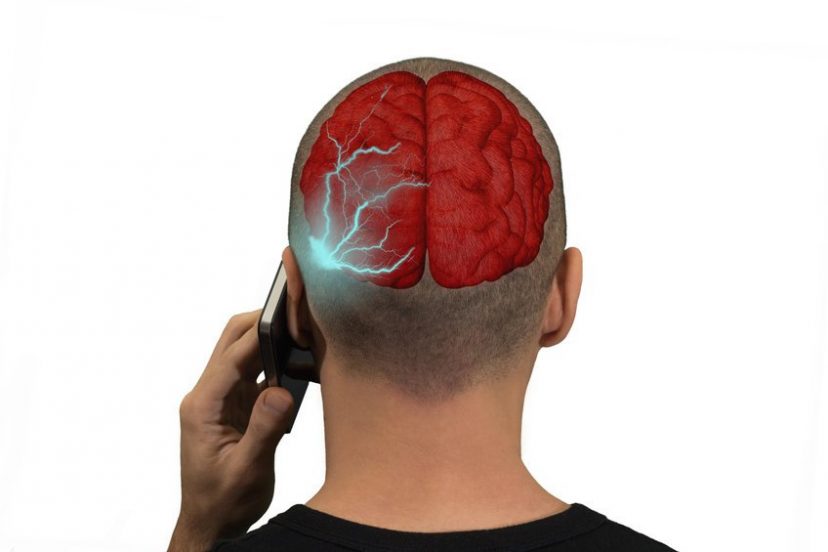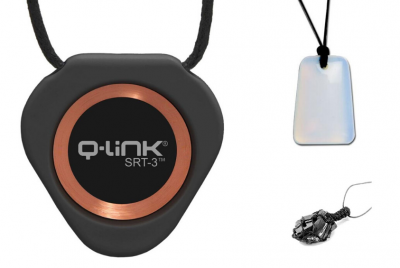When worn correctly, both Bluetooth and wired earbuds offer a lightweight and comfortable way to listen…
How To Avoid Radiation From Cell Phones

*We may earn a commission for purchases made using our links. Please see our disclosure to learn more.
You are probably well aware of the prevalence of cell phones in modern society. And, as a visitor to this site, you may also be concerned about the potential health impact of such heavy cell phone usage. We rely very heavily on the technology in our daily lives, though few of us are familiar with how to avoid radiation from cell phones.
Given the uncertainties surrounding cell phone radiation, it’s possible that you also are wondering about ways to avoid exposure in your daily life. That is what we are going to talk about in this guide– ways that you can lower the amount of radiation you receive from your cell phone.
Before we start, it’s important to note that it’s virtually impossible to eliminate exposure from your life. Even combining each and every tip in this article won’t completely wipe out cell phone radiation from your life. You may not use a phone, but your neighbors and other loved ones very likely do.
Reducing exposure, meanwhile, is a pretty reasonable goal. On that note, here are a few steps you can take to minimize your cell phone radiation levels.
Locate nearby towers
If your goal is to avoid radiation from cell phones, nearby towers must also be a consideration. Towers send information to and receive information from your cell phone using radio frequencies. If your home is in close proximity to one of these towers, it’s very possible that it contributes to your home’s cumulative EMF levels. And while moving may not be a realistic option, finding out about nearby towers can allow you to take steps to decrease the levels in your home.
There are several sites out there you can use to check for 4G and 5G cell towers in your area. CellMapper.net is one particularly good one. Ookla is also great for 5G, specifically. We go into more detail on each in our guides to locating 4G and 5G cell towers.
Given the rapid spread of 5G, even if it’s not in your neck of the woods now, there is a good chance that it will be soon. With that in mind, it’s a good idea to repeat your search every so often.
Test your levels
The RF-EMF radiation produced by cell phones can be measured using a standard EMF meter. Not all meters are capable of detecting radio frequencies, however, so check with your model to be sure that it is. If you don’t have an EMF meter, we usually recommend the TriField TF2 as a user-friendly and reliable entry-level meter. We also cover several other models in our guide to the Best EMF Meters For Any Budget.
Once you have a meter, set it to measure RF radiation and begin taking measurements around your home. Take special note of how much radiation is present in high traffic areas such as around the living room couch or kitchen table. The levels in any regularly used bedrooms are also important.
Another interesting measurement to take is the amount of radiation coming off your cell phone in various states and at various distances. Try taking a reading while your phone is in airplane mode, while it’s sending a call, receiving a call, downloading a file, connected to WIFi, connected to Bluetooth, etc. While taking your measurement, move the meter around to see how the levels change at different distances.
This exercise is useful because it helps give you some idea of how far away you need to keep your phone from your body in order to avoid dangerous levels of exposure.
How to avoid radiation from cell phones by switching to a wired landline
If you absolutely want to get rid of as much cell phone radiation from your life as possible, your best bet is to ditch the cell phone entirely. This doesn’t have to mean going completely off-grid, however. Corded phones are still a reality for many who work in an office environment, and there are plenty of options out there for home use, as well.
To be sure, a corded landline is not going to have as many bells and whistles as your smartphone. It’s not as convenient, and you have to be home to use it. But for some, that may be an upside — it may surprise you how much you enjoy not being reachable 24/7.
If you’re looking for a wired option, AT&T’s Trimline corded phone with caller ID is a basic phone that requires no AC power to function. It’s budget-friendly, and installation involves simply plugging in your phone cord. It’s worth mentioning, of course, that a landline does require its own separate subscription from your local telecommunications company. Still, this is oftentimes much cheaper than a cell plan.
Go into airplane mode
Maybe life without a cell phone simply isn’t an option for you. There are many people with a very real need to be reachable outside of the home, or who have to use cell phones for work reasons. In these instances, it is still possible to minimize the phone’s radiation production by simply going into airplane mode whenever possible.
When in airplane mode, your phone essentially shuts itself off to the outside world. No data is sent or received, and WiFi and Bluetooth are disabled. Because no signals are being transmitted, your phone produces substantially less RF-EMF radiation when in this mode.
The drawback to airplane mode, naturally, is that you aren’t able to use the phone to make or receive phone calls or do any activity that requires an active data or internet connection. Airplane mode is useful if there is a time during the day where you are able to disconnect. When these moments pop up, switch over to airplane mode.
How to avoid radiation from cell phones by downloading content
Along the same lines as airplane mode, downloading content to your phone is usually better than relying on an active internet connection. You can easily download music, movies, and games onto your device and then switch over to airplane mode. Because your content is downloaded, you will be able to use it, even in an offline environment.
The one disadvantage to downloading things is that you may find yourself quickly running out of storage space. You can get around this a few different ways. The easiest and cheapest option is to delete files as you are done with them. For example, download one album at a time, listen to it, delete it, and then download another.
Alternatively, if your phone has room for a microSD card, you could expand its internal storage capacity that way. If you need a lot of space, high-capacity cards such as SanDisk’s 400GB Ultra MicroSD card are an excellent option.
Use a wired headset
If you measured your cell phone’s EMF output with an EMF meter during a phone call, you saw how much radiation the phone is producing during that time. Now, imagine putting the phone directly next to your ear, as you would do during a typical call. That radiation is now in uncomfortably close proximity to your brain.
To get around this, it is recommended to use a headset during phone calls. While wireless sets do exist, they also produce some radiation of their own due to the Bluetooth they use to connect with your phone. Instead, corded options produce much less EMF radiation overall.
Your absolute safest bet with headphones is to find a nice air-tube headset. DefenderShield’s EMF-Free Earbuds are a great choice. They were designed by audio engineers and have a much better sound quality than your standard air-tube headset. Best of all, they produce virtually no EMF radiation.
Maintain your distance
If you shouldn’t hold your cell phone next to your head, it stands to reason that holding it in close proximity to other body organs may also cause problems. And it turns out, that may be true.
One example of this is male fertility. We go into much greater detail in our guide to EMF Radiation and Male Infertility, but essentially, exposure to RF-EMF radiation may alter both sperm quantity and quality. This may be exacerbated by the popular practice of storing your cell phone inside your pants pocket, right next to reproductive organs.
To help prevent health issues from close exposure, put as much distance between you and your phone as possible. Don’t store it in your pants pocket, or rest the device on your body as you use it.
Be mindful of your model
Not all cell phones are created equal. Different makes and models are going to produce different amounts of EMF radiation. Specific Absorption Rate (SAR) levels are used to regulate the amount of radiation produced by a phone, so manufacturers often provide these numbers to the public.
SAR is not a perfect measurement by any means, but it does give us a basis for comparison. We go into much greater detail on SAR in our guide to Cell Phones and SAR.
If you’re looking for a low-SAR phone, one popular option to consider is the Note 10 Plus. Samsung did a great job with the device, and the SAR levels fall significantly under the FCC’s set limit.
Final Thoughts on Avoiding Radiation from Cell Phones
Avoiding cell phone radiation is one way to reduce the effects of EMF radiation on your health. If you are also interested in methods you can use to block exposure, see our guide to The Best Ways To Reduce Cell Phone Radiation.



